#fabric workshop and museum
Photo

Pull the up down, 2020, watercolor, marker, pen, glitter, acrylic paint on paper, 18 x 24 inches.
Jonathan Lyndon Chase - Fabric Workshop and Museum

Helping Hands, 2020, fabric, acrylic, watercolor, pen, marker on paper, 21 x 19 inches

them in the black dress and purse, 2020, watercolor, acrylic, fabric, marker, pen, fabric jewelry, plastic phone, cotton on muslin, 39 x 10 x 10 inches.

Installation view of Jonathan Lyndon Chase: Big Wash, 2020. Photo by Carlos Avendano
#jonathan lyndon chase#artist#fabric workshop and museum#watercolor#marker#pen#glitter#acrylic paint on paper#art#artworks#fabric#fabric jewelry#cotton on muslin#carlos avendano
0 notes
Text
youtube
This is a compendium of four short films with English subtitles.
Sachio Yoshioka is the fifth-generation head of the Somenotsukasa Yoshioka dye workshop in Fushimi, southern Kyoto. When he succeeded to the family business in 1988, he abandoned the use of synthetic colours in favour of dyeing solely with plants and other natural materials. 30 years on, the workshop produces an extensive range of extremely beautiful colours.
Mr Yoshioka generously made two gifts of naturally dyed textile and paper samples to the V&A in 2016 and 2017. The process of creating these samples was recorded for a documentary broadcast in Japan in May 2017. The programme also explored the background to Mr Yoshioka’s passion for natural dyeing and his long-standing quest to revive historical colours whose methods of making have been forgotten.
The original footage from which the films have been compiled was taken using state-of-the-art 8K UHD (Ultra High Definition) technology developed by NHK Enterprises, Inc.The sequence of running is as follows:
In Search of Forgotten Colours - 5’15”
Beni Red (safflower; carthamus tinctorius) - 4’39”
Paper Flowers and the Omizutori Ceremony - 3’15”
Murasaki Purple (purple gromwell; lithospermum erythrorhizon) - 4’17”
The V&A is grateful to NHK Enterprises, Inc. and Art True Film for permission to use this material.
#Victoria and Albert Museum#solarpunk#Japan#Fushimi#Kyoto#Sachio Yoshioka#Somenotsukasa Yoshioka#Somenotsukasa Yoshioka dye workshop#dye workshop#natural dye#dye#textiles#fabric#Youtube
23 notes
·
View notes
Text

Mattresses and Cakes (1995)
by Nancy Rubins in collaboration with The Fabric Workshop and Museum, Philadelphia
photo by Adam Reich
23 notes
·
View notes
Text
The outrageous, extravagant, often humorous, and sometimes beautiful outfits worn by the subjects of old portraits.
Francis I — Fashion Influencer
François I was a fashion-forward monarch. He was fond of dressing in the latest, most lavish clothing, made from the finest fabrics and adorned with elaborate details of beading, gold and silver thread embroidery, and gems. He worked with his favorite designers to create elegant, bespoke garments.

François I • Jean Clouet • c. 1530
Francois was a Renaissance influencer who brought the latest fashions to his court at Fountainblu, including "slashing" (more on that in an upcoming post), collars, and the codpiece.
Above, he wears a wide-necked doublet with paned sleeves under dark gold jerkin and a satin overgown with turned-back sleeves. His shirt has a tiny frill edged in black at the neck and wide ruffles at the wrist.
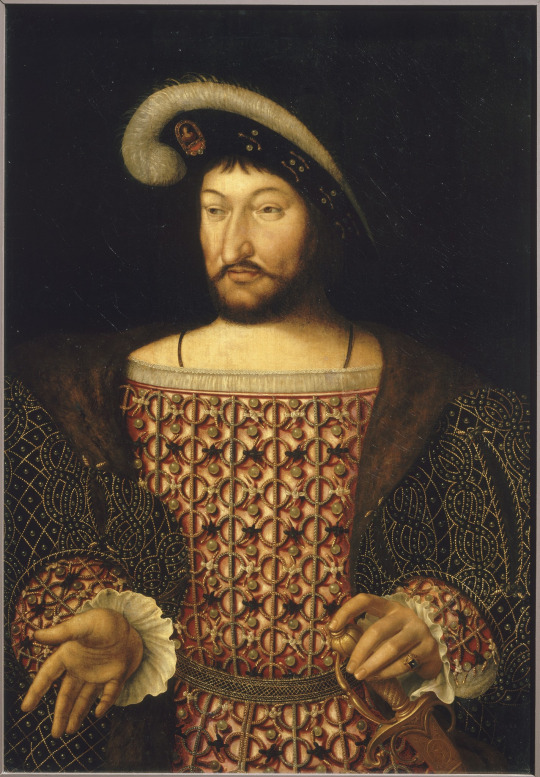
The Workshop of Joos Van Cleve (1480 or 1490 (ca.) – 1540 or 1541) • Oil on wood applied to the canvas • Château de Fontainebleau, Gallery of Splendours.
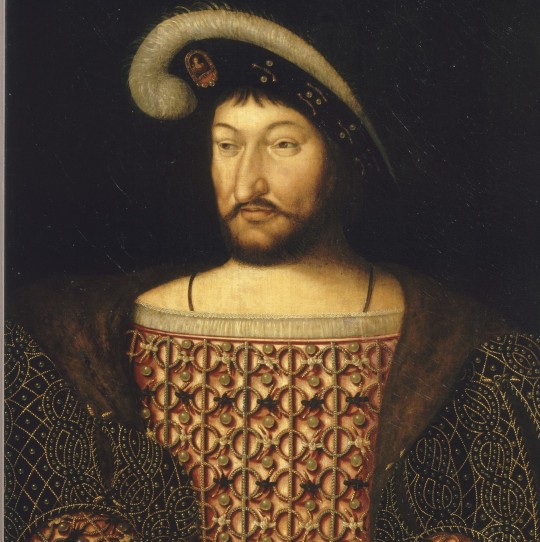
François I (Detail)

François I (Detail)

Besides being exquisitely dressed, and perhaps more importantly, Francis I was a great patron of Renaissance architecture and art. During his reign, he built or rebuilt numerous châteaus, including the Louvre in Paris and the magnificent royal residence at Fontainebleau. The king invited the Italian master Leonardo da Vinci to settle in France, and the artist spent his last years there. Francis also collected art works by Renaissance masters such as Raphael, Michelangelo, Titian, and Benvenuto Cellini. His collection of art, including a famous portrait of the king by Titian, became the core of the Louvre museum.
#portrait#art#painting#royal portraits#court portraits#françois I#french king#da vinci#jean clouet#french renaissance#art history#historical portrait#the resplendent outfit#tudor history#fashion history#royal fashion#17th century portraits#history of fashion#fontainebleau#musée du louvre
19 notes
·
View notes
Photo


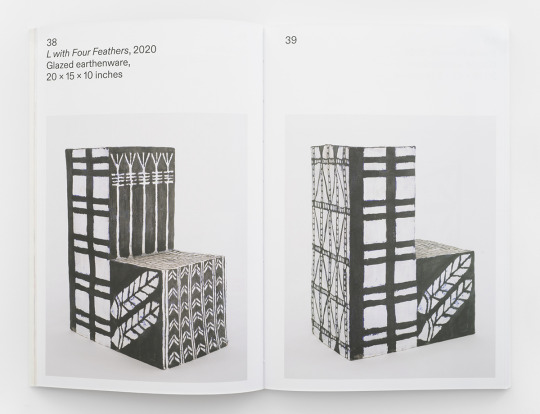
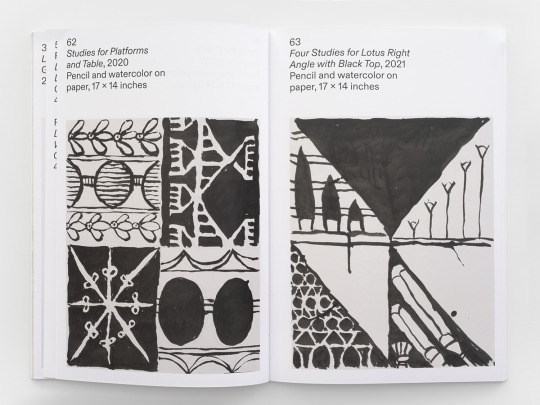

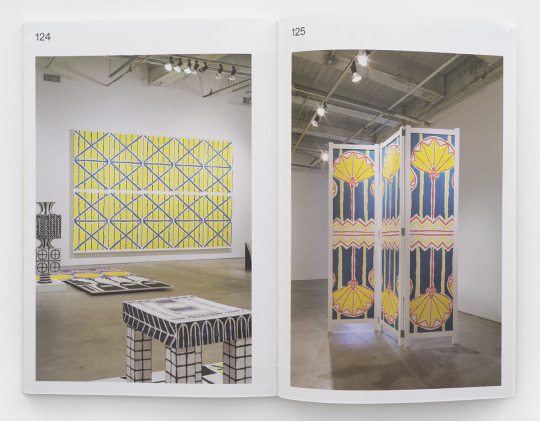

Elisabeth Kley: ‘Minutes of Sand’, Edited by Sarah Braman, Essay by Amelia Stein, Interview with Rachel Adams and Karen Patterson, Designed by Joe Gilmore, Photography by Joe DeNardo, Carlos Avendaño, and Colin Conces, The Fabric Workshop and Museum, Philadelphia, PA / The Bemis Center for Contemporary Arts, Omaha, NE, 2023 [Exhibitions: The Fabric Workshop and Museum, Philadelphia, PA, March 5, 2021 – August 15, 2021; The Bemis Center for Contemporary Arts, Omaha, NE, December 8, 2022 – April 16, 2023]
#graphic design#art#drawing#mixed media#geometry#pattern#structure#exhibition#catalogue#catalog#cover#elisabeth kley#sarah braman#amelia stein#rachel adams#karen patterson#joe gilmore#joe denardo#carlos avendaño#colin conces#fabric workshop and museum#bemis center for contemporary arts#2020s
30 notes
·
View notes
Text
Maybe it's time to acknowledge that when multiple people, some family and friends, but some near strangers who's profession is to see what other people are good at, tell me that I have skill, talent and passion to do some really cool art, eventually even professionally, then just maybe they're not completely wrong...
I have always looked at fiber artists in awe but never believed it's something I could actually do myself, but the time I've spent at the workshop and talked with people there, has made me face that I do have the technical skill and knowledge and apparently the needed creativity too to make cool stuff with yarn and fabric.
And you know what? There's a degree I maybe could pursue in the vocational school that also runs the workshop. I would need to convince SII (Social Insurance Institution) that it would be worth to finance a third degree for me now that I'm over 30 and have never managed to hold a job on my own (undiagnosed ADHD and depression might do that) and from what I've gathered it's not the easiest task, but considering 1. how badly SII wants me to get employed, 2. my two previous degrees would both support the third, 3. my mental health is in much better state (confirmed by multiple professionals) and 4. I have much better understanding of what I can and cannot do and also what I'm passionate about, it's not impossible either.
And in the meantime... Well, I got a card from Social Services that allows me to attend one Worker's Institute course for free (on top of free entry to museums) and if possible, I will use it to learn a fiber craft skill I don't yet have 👀
8 notes
·
View notes
Text
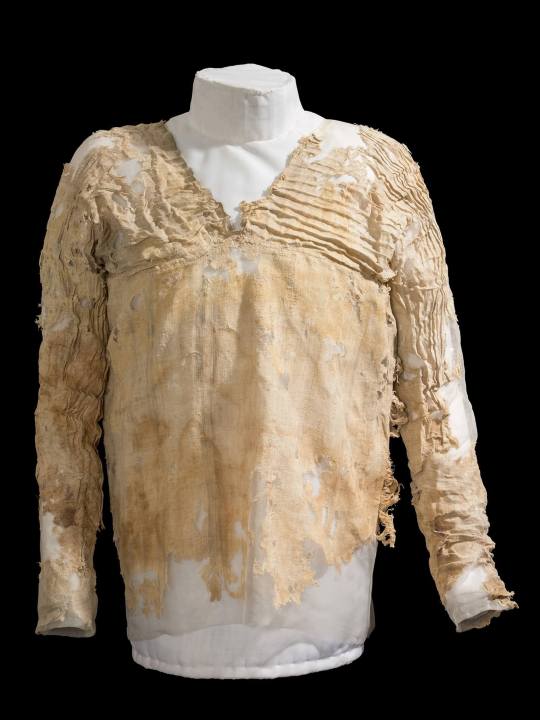
Tarkhan dress
“The Tarkhan dress” (UC 28614B) discovered by Sir Flinders Petrie in 1913, was found within the Tarkhan Necropolis (Mastaba 2050).
Certified radiocarbon dating conducted by the University of Oxford, places the creation of this garment to Egypt’s 1st Dynasty, c. 3000 – 2800 B.C. Further testing by the British Museum certified its dating.
“The Tarkhan Dress” is one of multiple pieces of textile, linen and clothing found in the Tarkhan Necropolis, but it was in 1977, that the Victoria and Albert Museum’s Textile Conservation Workshop working to clean these items of linen, discovered that this piece was a purposely designed item of clothing, with clear signs of pleated fabric that are still visible today.
As of 2023, The Tarkhan Dress remains the oldest purposely designed and woven garment in the world.
Read more
11 notes
·
View notes
Text






Fine weaver REZIA WAHID, born 1976 in Bangladesh, lives in UK.
"Since achieving BA (hons) in Woven Textiles with a First-class degree in 1998 from the Surrey Institute of Art and Design, England, I have been passionately working with absolute determination and inspiration to revive the heritage of traditional weaving in the contemporary world of Art.
As a student, my interest in handwoven textiles led me to the Victoria and Albert Museum in London, where I found an immense collection of handwoven fabrics from ancient traditional to modern contemporary and from all over the world: where you can see different cultures and religions as well as similarities and variety in technique. This was the first time where I became absolutely fascinated by the handwoven fabrics of Bangladesh Jamdani. In my research I found that Christopher Columbus had described these fabrics being so fine that one piece of cloth can pass through a signet ring. These fabrics were woven in Dhaka, East Bengal, India (now Bangladesh).
As a contemporary weaver, my passion and fascination with these fabrics kept growing and I made it my mission to find out how they were hand woven and where the designs originated from. Not to my surprise, these fabrics were handwoven using the traditional Jamdani handwoven technique of Bangladesh where the motifs are inlaid by hand, and due to the Islamic heritage of the country it used traditional Islamic geometric patterns. This is the reason why these fabrics are so unique and the Bangladeshi weavers are still trying to keep this unique craft alive. However, due to the economical climate and the lack of understanding of this traditional Bangladeshi and Islamic heritage, it is a rare craft and my research continues. Continue
My creative and personal artistic voice, however, was born from finding a field full of dandelions seeds during a walk in the greens of Farnham in 1996. When I walked into the delicate, ethereal and tranquil moment with the magic of air and light—I knew that I wanted to capture this feeling in my weaving. But how do I capture a ‘feeling’ when weaving with yarns? Feelings can only be written, heard or explained. So, I decided to write the words in my sketchbook and captured the seeds in a clear container of Ferrero Rocher—my favourite chocolates. And this is how I began to write and express thoughts, feelings and stories with yarns!
18 notes
·
View notes
Text
In the last week I have done so much:
Wednesday- went to the state capitol to demand a larger arts budget next year
Thursday- gave a fucking killer presentation to recieve a fully funded fellowship to attend a workshop at a fancy craft school (keep me in your thoughts pls!)
Friday- went to a museum and listened to an artist talk about their work and professional life (and sat next to a ceramic fucking legend, like the Michael Jordan of mold making) & taught a class that evening
Saturday- I showed my test piece to the guy whose commissioning three large pieces from me for his lake house and he loved them!! He's so excited!! (Also had a great work day in the studio)
Sunday-attended my really good friend's first solo show!! I'm so proud of her!!! (I kind of took a day off)
Monday- wrote drafts for my letters of intent to apply to local residency programs!! And I wrote a draft for a project proposal to built a 9ft metal sculpture.
Tuesday-fabricated a fish out mild steel. I used a plasma cutter, a mig welder, Beverly shears, jump shears, a spot welder, angle grinder, and the ol' hammer and anvil.
Wenesday- built my first crate to ship artwork!!! And I shipped it to be exhibited at a national ceramic conference!!! It's a huge big fucking deal actually. I also had lunch with the ceramic legend person!! Ahh!!
Thursday- I had a meeting about the metal sculpture with the fabricator! They really like my design!! And they think I can do it!! I also spent time in the print room and did a print run of 24 of a octopus linocut!
3 notes
·
View notes
Text
A man in panties that said “SugarMoney” presented at an LGBTQ+ Art festival organized by three biological men.
A trans activist known for staging protests involving human urine was invited to perform at the Tate Museum on Sunday, where he gave a reading while dressed in women’s underwear.
The event, part of Queer and Now, an LGBTQIA+ art festival, was organized by three trans-identified males; June Bellebono, Jamie Cottle, and Carly Yvoty Fernandez. The three read excerpts from their publication, oestrogeneration, a magazine describing itself as a “platform highlighting transfeminine voices in the UK.” Content on the publication’s website is overtly sexual and promotes the sex industry.
The men who presented their publication read selected articles from the first issue, Tenacity, described as containing “essays covering orgasms, squatting and security culture,” which is self-lauded as “a dynamic display of the breadth of expressions our identities hold.”
“Mr. Menno,” a Dutch content creator who advocates for the rights of women and homosexuals, was in attendance at the event, and shared a number of disturbing photos and video clips to his Twitter.
In one video, Cottle can be seen reading an article aloud to an audience while wearing women’s lingerie. The crotch of the thong was emblazoned with the words “Sugar Money,” and Cottle’s testicle flesh appears to be faintly visible through the sides of the fabric.

Speaking with Reduxx, Menno explained that the presentation was intended for an audience aged 16 and older, but that no barriers had been put in place and events for children were actively occurring in other parts of the museum.
“I didn’t see any children there at the time but the area was open, not closed off, no doors, anyone could come and go,” Menno said. “You could also go through this space to get to the room where the Museum of Transology had kid’s events.”
“[Cottle’s] whole outfit was geared to draw attention to his groin. It’s just so utterly bizarre to be face to face with guys who are clearly male calling themselves some kind of women. To me there’s something creepy about the name oestrogeneration, basing the identity of a whole generation of men around taking synthetic drugs to acquire female-typical hormone levels,” he said.
“I don’t know why I should somehow see them as my ‘siblings’ just because I’m gay. I want nothing to do with it. Yet this is ‘queer’ in the U.K. and I’m told this is my community,” Menno continued. “And at one point when the audience had gathered to listen to their talks he turned around to push the table back, showed his bum, giggled, and got some cheers from the audience.”
The most recent article featured on the oestrogenerationsite is called “Against All Odds, I Will Cum,” and is accompanied by an illustration of a childlike figure.

The author, a trans-identified man named Samantha Lacob, describes his masturbation habits after he began taking estrogen, and claims that he experiences “orgasm synesthesia.”
“Like most transfeminine people I was born with a penis… it was harder to achieve an erection and almost impossible to keep it, but also, not necessary. I got there in the end, a bit over 4 months after surgery and after a lot of wanking,” the article reads.
Featured on the cover of oestrogeneration is a trans-identifying male who has worked as a general practitioner for over 20 years. Dr. Kamilla Kamaruddin, originally from Malaysia, serves as a board member for Spectra, a non-profit organization which offers HIV testing, STI screening, gender identity workshops, and “social groups for young people.”
Kamaruddin works for the National Health Service (NHS) and acts as the clinical lead for the East of England Gender Service, Cambridge. He campaigns to encourage the NHS to partner with transgender lobbying groups.
One article from oestrogeneration presented and written by Cottle, titled “A Strong Feeling of Desperation,” is written in the form of experimental prose and contains sexual language.
“Walking here felt as it always does, my desires rendered in retinal surveillance; their lust, my lust, meeting, fleeting outside Oxford circus, in a primordial slime of the vitreous inside eyes… Gabriel’s angels brim with life, fakery, and lust; they are droplets of cum ossified into marrow and faux pearls sewn into satin.”
Cottle, a trans-identified male who uses the moniker “Biogal” on social media, is associated with a protest group that calls themselves Pissed Off Trannies, or POT.
Twice in the past year, POT has staged demonstrations that involved dumping large quantities of human urine outside of the Equality and Human Rights Commission (EHRC) to protest laws that strengthen women’s protections. A recent Instagram post suggests they may be using water mixed with turmeric to supplement their urine.
Most recently, members of POT gathered outside of the EHRC on May 22 to leave 90 liters of their supposed waste around the perimeter of the building.
The protest was in response to a recent statement by chief executive of the EHRC, Melanie Field, in which she affirmed the definition of “sex” in a show of support for protections for biological sex as a protected characteristic, as well as for plans to prevent trans-identified males from accessing women’s facilities on self-declaration.
“Pouring piss is an anarchist act of resistance that stakes an urgent and lingering claim on our basic human rights … If you take away our toilets we will make one on your doorstep,” POT stated in an Instagram post depicting the protest.
After staging his first protest outside of the EHRC last year, Cottle boasted about his actions on Instagram, revealing his association with the group. As reported by Vice, during the demonstration, Cottle “pissed [himself] in [his] bejewelled gown, before pouring bottles of urine on [himself] and the pavement outside the building, all the while shouting: ‘The EHRC has blood on its hands and piss on its streets.'”
Other performances by Cottle, which he claims are demonstrations of trans activism, are similarly graphic.
In one performance from 2022, simply titled “FISH,”Cottle strips while slapping himself with a dead fish. In another from that same year, titled “Prayer for the Pearl Oyster,” Cottle is seen wearing women’s underwear, transparent platform heels, and a pearl necklace. He rips fabric, tosses about oysters, and screams while stomping on the shells. Cottle then begins writhing, strips naked, and removes a sex toy from his anus.
By Genevieve Gluck
Genevieve is the Co-Founder of Reduxx, and the outlet's Chief Investigative Journalist with a focused interest in pornography, sexual predators, and fetish subcultures. She is the creator of the podcast Women's Voices, which features news commentary and interviews regarding women's rights.
He was dressed like this

When not only kids were in the museum but there were kids events in the next room. This sounds like some kind of exhibitionist fetish. If kids saw him he could claim that kids weren’t supposed to see him. It was the parents fault for not making sure their kids were in the right room. You can’t be mad at an LGBTQ+ artist during an LGBTQ+ event, right?
Weird that for years the ideology was don’t make a big deal out of a trans woman’s penis because it makes them feel very insecure to not be like real women. And now they are dressing in outfits to draw attention to the groin.
#Tate museum#UK#London#Queer and Now#June Bellebono is a man#Jamie Cottle is a man#Carly Yvoty Fernandez is a man#oestrogeneration#A magazine run by men promotes the sex industry#The museum of Transology had kids events
10 notes
·
View notes
Text
by Shiryn Ghermezian
A one-day pop culture convention set to take place in New York City in November will be the first of its kind to celebrate characters, narratives and creators of Jewish comic books and graphic novels.
“JewCE: The Jewish Comics Experience” is being organized by the Center for Jewish History, which is the comprised of five partner organizations: American Jewish Historical Society, American Sephardi Federation, Leo Baeck Institute, Yeshiva University Museum and YIVO Institute for Jewish Research.
The convention will highlight the Jewish history of the comic book industry and the tradition of Jewish storytelling as it applies to the creation of comic books, and well as Jewish comic book and graphic novel narratives, themes, characters and creators. The event will include a minimum of 10 panels and workshops, the opportunity to meet 24 comic book artists and writers and other programming. Guests are also invited to visit the new Jews in Comics exhibit at the Center for Jewish History in advance of the convention.
“JewCE is designed to be an inclusive convention, celebrating an industry largely created by Members of the Tribe, and promoting diverse Jewish narratives in comics and graphic novel,” the Center for Jewish History said in its description of the event.
Tickets are already on sale for the convention, which will take place on Nov. 12, in-person and on Zoom, with a preview night on Nov. 11 in-person only at the Center for Jewish History. There will also be a JewCE Awards ceremony, to be held on preview night, that will celebrate diverse Jewish comics and graphic novels. Nine awards will be presented by a panel of judges from the industry. The honors include a Combating Prejudice Award, a Book Award in Diverse Jewish Representation and the Macherke Award for Career Contributions to Jewish Comics.
“The Jewish Comics Experience has what it takes to make it to the major league of comic conventions and I could not be more proud to be a part of it,” Fabrice Sapolsky — a comic book creator, publisher and co-creator of JewCE — said in a released statement. “Comic books, graphic novels, and sequential arts are amazing mediums to convey stories. This industry was founded by a group of young — mostly Jewish — creators in the 1930/40s. JewCE will keep honoring the past while promoting present-day storytellers and inspiring creators of tomorrow. It will be an inclusive journey into Jewish diversity through art and creativity.”
JewCE Co-Creator Dr. Miriam Eve Mora, who is also director of academic and public programs at the Center for Jewish History, called JewCE “a love letter to the creators themselves, Jewish and non-Jewish, who have worked to include Jewish characters in their stories, to demonstrate Jewish diversity across the pages, and to provide a visual and cultural home for Jewish readers of all ages to feel seen, included, and embraced.”
“At times only perceptible to those in the know, Jews have long had a home between the covers of comic books of all sorts,” she added. “JewCE brings that home to light, celebrating Jewish characters and creators of all ethnicities, nations of origin, religious observances, genders, sexual orientations, and political affiliations.”
19 notes
·
View notes
Text
I seem to have missed #ILoveHorsesDay yesterday 😭 so since it’s also still #WorldSnakeDay here is a duo to cover both:

Lozi artist (Western Province, Zambia)
wood bowl with lid (mukeke) x 2
L: horse c. 1905-16
R: snake early to mid-20th c.
National Museum of African Art, Smithsonian Institution
“CURATORIAL RESEARCH Arts of a nation. Lozi works of art are rare in U.S. collections, though they display formal creativity and a remarkable history.
Turn-of-the-20th-century Lozi king Lewanika (r. 1878-1916) was both a savvy politician and a renowned artist. Lewanika negotiated to have his kingdom, Barotseland, established as a British Protectorate and not a colony. His talents also included carving wood and ivory, and basket weaving, as well as fabricating spectacular barges and pageants. He formed a workshop in the royal capital and sold Lozi wares, thus demonstrating a commitment to the arts that influenced art production throughout his kingdom.
Curatorial research at the museum indicates that the bowl with the horse atop its lid was likely carved by Lewanika or his workshop. The fanciful bowl in the shape of coiled snakes was probably carved during the reign of Lewanika's son and successor, and reveals the ongoing artistic creativity in this region.”
#animals in art#20th century art#African art#Lozi art#woodwork#bowl#horse#snake#serpent#I Love Horses Day#World Snake Day#animal holiday#museum visit#Smithsonian National Museum of African Art
7 notes
·
View notes
Text

Richard Tuttle, in collaboration with The Fabric Workshop and Museum, Philadelphia, Pants, 1979. Pigment on bleached cotton muslin. 72 x 26 inches. Limited edition. Photo credit: Will Brown.
2 notes
·
View notes
Text

Significance of the Cummer Museum of Art and Gardens in Jacksonville
The Cummer Museum of Art and Gardens in Jacksonville stands as a testament to artistic and natural beauty, weaving together history, culture, and the splendor of the outdoors. Founded in 1961, the Cummer Museum has evolved into a beacon of artistic expression and a serene oasis, making it a cornerstone of Jacksonville's cultural landscape.
Preserving Artistic Heritage
At the heart of the Cummer Museum's significance lies its extensive art collection. Housing over 5,000 works of art spanning from 2100 BCE to the 21st century, the museum offers a diverse range of artistic styles, mediums, and cultures. Visitors can witness the evolution of art through various periods, including European, American, and Asian art, showcasing paintings, sculptures, and decorative arts.
Masterpieces and Noteworthy Collections
The museum boasts an impressive collection of renowned artists such as Peter Paul Rubens, Thomas Moran, and Winslow Homer. Each piece tells a story, capturing moments in time, reflecting cultural shifts, and preserving the essence of artistic mastery.
Enchanting Gardens
Adjacent to the museum lies the enchanting Cummer Gardens, a picturesque haven that spans 2.5 acres along the St. Johns River. The gardens feature historic landscaping styles, including the Olmsted Italian Garden, the English Garden, and the Cummer Oak. Visitors are invited to stroll through lush pathways, admire the vibrant flora, and revel in the serenity offered by these meticulously curated grounds.
Community Engagement and Education
Beyond its captivating displays, the Cummer Museum actively engages with the community through educational programs, workshops, and events. These initiatives aim to foster a deeper appreciation for the arts and nature, catering to diverse audiences of all ages. From art classes to lectures and interactive exhibitions, the museum endeavors to inspire creativity and ignite curiosity in its visitors.
Cultural Hub and Legacy
Moreover, the Cummer Museum serves as a cultural hub, hosting events that celebrate local artists, cultural traditions, and historical legacies. By nurturing a space that honors both artistic expression and environmental beauty, the museum cements its role as a cultural steward, preserving heritage for future generations.
Impact on Jacksonville's Identity
The Cummer Museum isn't just a repository of art and nature; it's an integral part of Jacksonville's identity. Its presence enriches the city's cultural fabric, drawing in locals and tourists alike to appreciate the transformative power of art and the tranquility of nature.
Conclusion
The Cummer Museum of Art and Gardens in Jacksonville stands as a testament to the enduring power of artistic expression and the captivating beauty of nature. Its significance lies not only in the art it preserves but also in the experiences it offers—inviting visitors to immerse themselves in a world where creativity, history, and nature intertwine, leaving an indelible mark on the cultural landscape of Jacksonville.

#Cummer Museum#Museum#Art#Gardens#Jacksonville#Florida#Cummer#Tudor#St. Johns River#River#urban#city#USA#United States#travel#journey#outdoors#architecture#Bridge
3 notes
·
View notes
Text

REAL ESTATE BUSINESS IN DUBAI, DOWNTOWN / DESIGN DISTRICT
Life in Dubai: Where Opulence Meets Innovation in Downtown and Design District
Dubai, the city of towering skyscrapers, dazzling lights, and seemingly endless luxury, holds two distinct gems within its heart: Downtown Dubai and Dubai Design District (d3). While both share the vibrant pulse of the city, each offers a unique flavor of life, attracting residents seeking different experiences. So, which one might suit you better? Let's explore the essence of life in each:
Downtown Dubai: A Symphony of Luxury and Convenience
Imagine stepping out your door and being greeted by the Burj Khalifa piercing the clouds, the Dubai Mall offering an endless array of designer brands, and the Dubai Fountain captivating you with its choreographed water dance. This is the quintessential Downtown Dubai experience. Life here is fast-paced, opulent, and dripping with convenience. Luxury apartments with breathtaking views, Michelin-starred restaurants, and designer boutiques are your everyday companions.
Living the high life: Residents in Downtown enjoy effortless living. Everything is a stone's throw away, from world-class entertainment like Dubai Opera to iconic landmarks like Dubai Museum. Whether you crave a quick grocery run or a lavish spa treatment, there's an option for every whim. Connectivity is seamless, with efficient public transport and readily available taxis.
The flip side of opulence: Life in Downtown comes with a hefty price tag. Rents are notoriously high, and the constant buzz of activity can be overwhelming for those seeking quieter spaces. While family-friendly options exist, the focus on luxury caters more to young professionals and jet-setters seeking a vibrant, fast-paced lifestyle.
Dubai Design District: Where Creativity Collides with Community
Tucked away on the banks of Dubai Creek, d3 offers a starkly different atmosphere. Vibrant street art adorns repurposed warehouses, trendy cafes buzz with creative energy, and independent design studios showcase innovative ideas. Here, life pulsates with a creative heartbeat, attracting artists, entrepreneurs, and design enthusiasts.
Cultivating creativity: Artists find an inspiring haven in d3, with dedicated studios, co-working spaces, and regular exhibitions fostering collaboration and growth. The community spirit is strong, with events and workshops bringing people together to share ideas and support each other's endeavors. Families are welcome, with the relaxed atmosphere and focus on art offering a unique upbringing.
Finding balance: Life in d3 is more affordable than Downtown, with a mix of residential options catering to diverse budgets. While amenities aren't as readily available, the walkable community vibe makes exploring a pleasure. The pace is slower, encouraging residents to connect with themselves and their surroundings.
Choosing your Dubai:
Ultimately, the "better" place to live depends on your personal preferences and priorities. Do you crave the convenience and luxury of Downtown, or the creative energy and community spirit of d3?
For the:
Young professional or jet-setter: Downtown's fast-paced, luxurious lifestyle beckons.
Family seeking a unique upbringing: d3's artistic community and slower pace offer a different perspective.
Passionate artist or entrepreneur: d3's collaborative atmosphere fuels creative pursuits.
Budget-conscious individual: d3 offers more affordable options while still providing access to Dubai's attractions.
Beyond the divide:
While both Downtown and d3 exist as distinct entities, they are interwoven into the fabric of Dubai. Residents can effortlessly experience both worlds, with convenient access and a shared cultural pulse. So, whether you choose the opulent symphony of Downtown or the creative melody of d3, remember that the true magic of Dubai lies in its ability to cater to diverse desires, offering a unique experience for everyone.
GO GOLD BUSINESS BAY PROPERTIES - emirate hills gated luxury mansions Dubai, UAE
FINTECH SEO / REAL ESTATE MARKETING & CONSULTING
#DUBAI#seodubai#marketing#digital#digitalstrategist#digitalstrategistdubai#SEO emea#EMEA#EAST#d3#design district#dubaiapartments#apartmentsdubai#realestateexpert#realestatemarketing#real estate marketing#emirate hills gated luxury mansions dubai uae#emirate hills gated luxury mansions
5 notes
·
View notes
Text


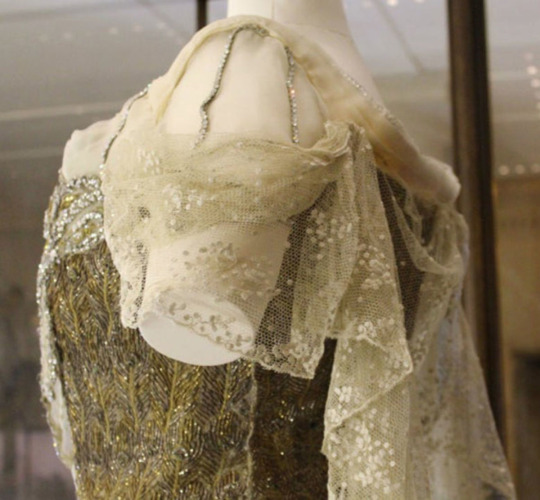
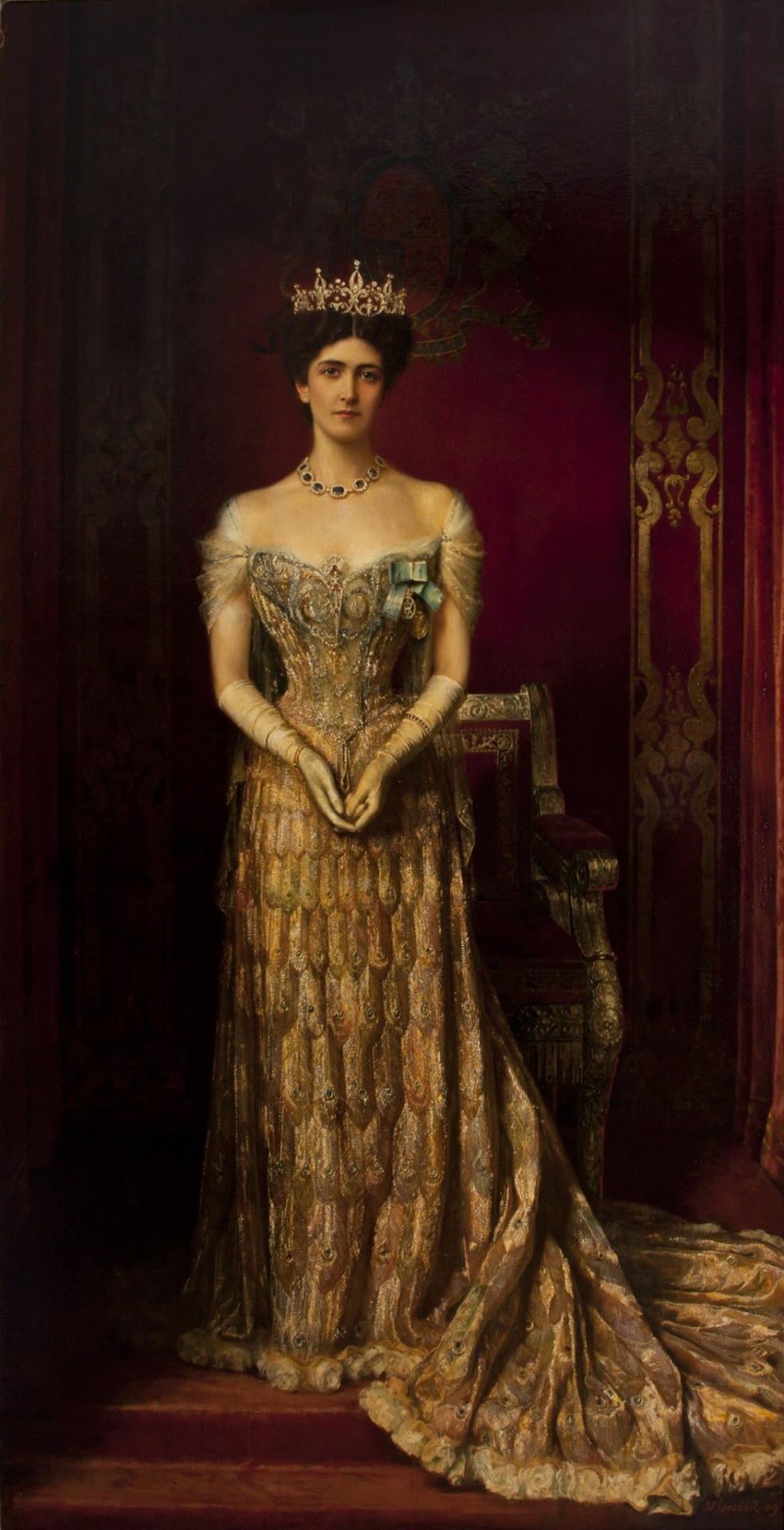
The Peacock Dress worn by Lady Curzon (1903)
History of the dress:
(This info was found on the national trust collection website. I didn’t write it)
Lady Mary Curzon became Vicereine of India upon on her husband’s appointment as Viceroy in 1898. She recorded her experience of India in diaries and countless letters, a life revolving around a calendar of social events staged to symbolise the authority of the British Empire. Despite frequent ill-health, Lady Curzon was the public face of the Viceroyalty and her life was scrutinised and reported on by the press. She had a keen interest in fashion and was aware of the importance of her appearance as the wife of a political figure. Known for her preference of combining Indian textiles with European fashion styles, Lady Curzon wore this gown, known as Peacock Dress, at the 1903 Delhi Durbar Coronation Ball. The Ball was the pinnacle of two weeks of events marking the succession of Edward VII and Queen Alexandra as Emperor and Empress of India. It was held in the Diwan-I-Khas at the Red Fort, Delhi, the historic residence of the Mughal Emperors. Lady Curzon’s dress deliberately referred to – or, as the historian Nicola J. Thomas writes, ‘replaced’ – the Peacock Throne which had originally stood in the Diwan-I-Khas (Thomas 2007, p. 392). This dazzling jewelled throne, now lost, was made for Shah Jahan in the early 17th century but was looted during the Persian invasion of Nader Shah in 1739. A replica throne was destroyed in 1857 when the British commandeered the Red Fort as a garrison in India’s First War of Independence. The gown was made of Zardozi embroidered fabric traditionally used for elaborate Mughal court garments and palace furnishings. The technique takes its name from the densely worked metal thread; zar (gold) and dozi (work). It used the peacock image for its pattern, a symbol of great significance in Indian culture and the Hindu religion. The use of this motif would have been noted by all who saw it. The fabric was embroidered at the workshop of Kishan Chand in India and is likely to have been sourced by Lady Mary herself before being shipped to Paris to be made into a dress by the House of Worth (Thomas, 2007). Mary was unusual in her choice to wear Indian textiles, and to have many of her clothes made up in India. This would not have gone unnoticed in the higher echelons of Indian society, among Maharajas and Maharanis at state functions. Other gowns worn by Lady Curzon in India are in the collection of the Fashion Museum, Bath.
#peacock dress#edwardian fashion#edwardian era#edwardian#long dress#historical#historical fashion#fashion#edwardian dress#photography#painting
15 notes
·
View notes